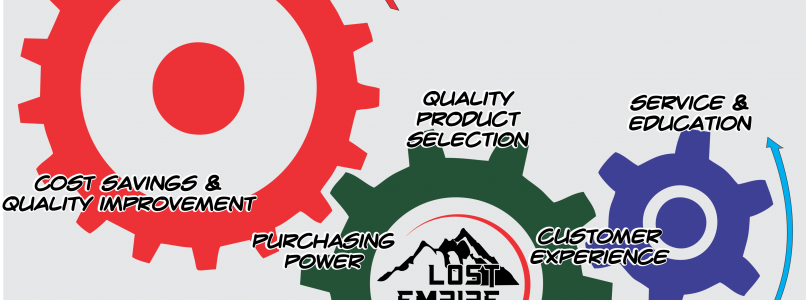The Flywheel is a concept that came from Jim Collins, in his book Good to Great. He went on to further cover it in Turning the Flywheel: A Monograph to Accompany Good to Great.
Truth is I haven’t read either of these. But I did hear Jim Collins describe the flywheel in an interview with Tim Ferriss.
Jim states “In building a great company or social sector enterprise, there is no single defining action, no grand program, no one killer innovation, no solitary lucky break, no miracle moment. Rather, the process resembles relentlessly pushing a giant, heavy flywheel, turn upon turn, building momentum until a point of breakthrough, and beyond.”
Then I saw it covered while reading The Everything Store. I played with the concept a bit then, but didn’t get anything nailed down.
Finally, in my third exposure to the concept, late last year I read The Bezos Letters. (Shout out to Jeff and Beth McCord for giving me the book!)
This time I felt it was time to really focus on it. I’d recently started doing Computer-Free Work Days once a week. Part of the reason for that was to free me up from activity so that I could take chunks of time to think deeply about such concepts.
Make no mistake, figuring out the flywheel for a business takes some hard thinking. I sat at my whiteboard for probably two hours sketching out different versions.
Ultimately, I came to this:

I then shared it with others and my team. I reflected on it some more. No one could come up with any improvements on it.
So I handed it off to our graphic designer to make it a bit prettier and this is the result. (You’ll notice the order on the bigger wheel is switched, but that is because of the gears spinning that would be required for this to be physically real.)
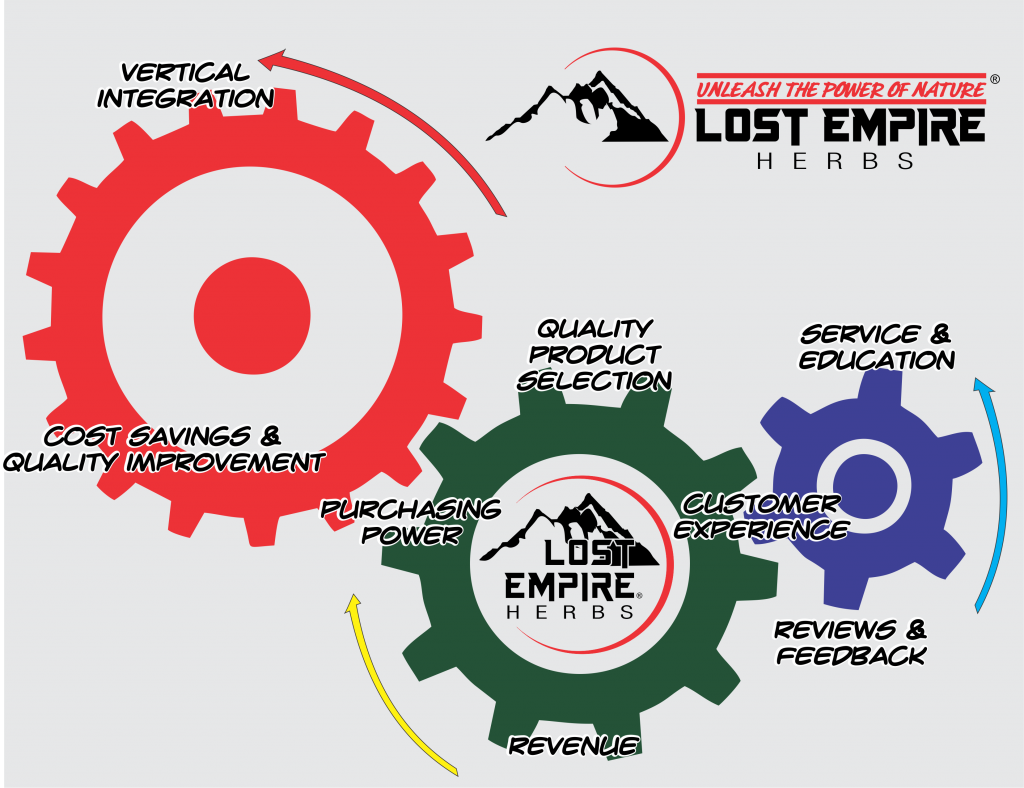
In working on this, I recognized that all it is is a systems diagram (systems thinking being an area I deeply explored last year). At this level it is shown as the big picture.
But it is fractal! This means that you could zoom in to see more detail. Already I’ve spent some more time systems diagramming the business in more detail and plan to continue to do so.
Other Examples of Flywheels
In order to come up with Lost Empire Herb’s flywheel, I found it helpful to look at a number of examples. So here are a few more, and of course, you can dig around the internet to find even more.
This is Amazon’s:

A company called Noble Journal:
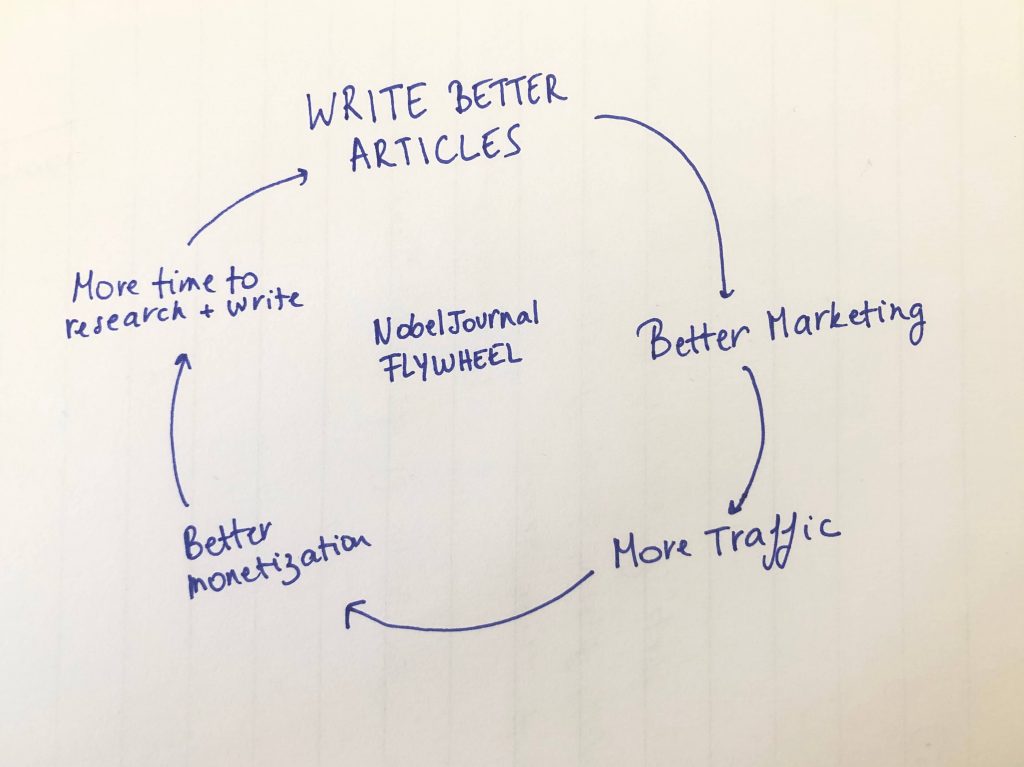
A blog called FutureBlind maps out the following three for Microsoft, Google and Walmart.
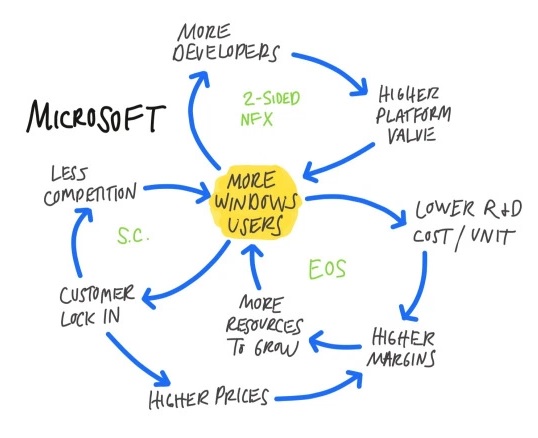


And then Ben Munoz’ blog shares even more:
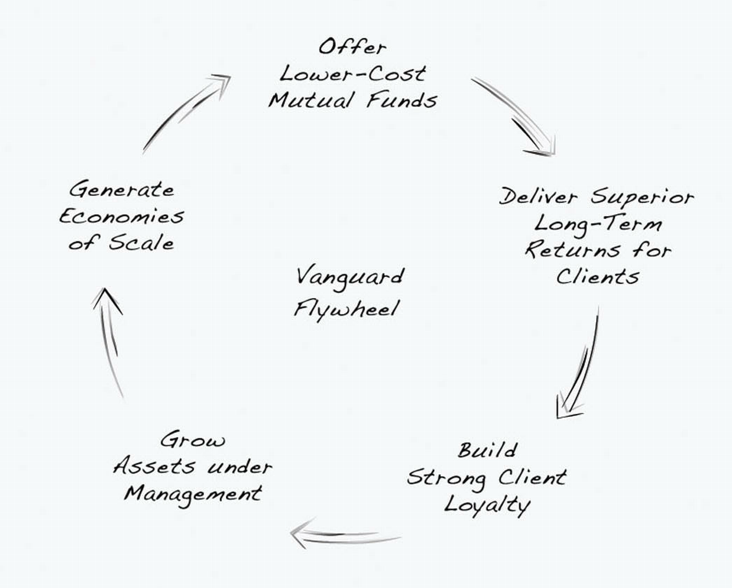
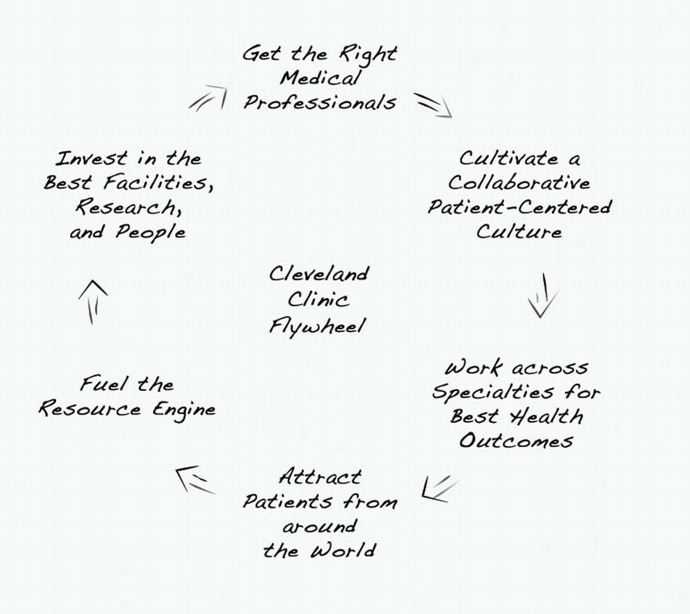
Understanding the Loops
As you can see many people map out a single loop. But often there is more than one. These might be completely independent or touching on each other in multiple ways.
Back to Lost Empire Herbs. You can see that there are three loops, and these are made three different sizes for a reason.

Small Blue Loop
The small blue loop goes from customer experience to reviews & feedback to service & education. We live in the “review economy” nowadays. The more reviews you have the more of a network effect you have. (It’s not nearly as strong as an Uber network effect for example, but still a network effect.)
The more reviews and feedback we get the better we can do with our service and education. For example, a customer comment or question may become a blog post and/or video that is then there for future customers as well.
This in turn feeds back to greater customer experience. It is very important, but it is the smallest wheel for a reason. If we had double the reviews it likely would improve sales to a small degree, but not nearly as much as the effects from the other loops.
Core Green Loop
The mainstay of the business is our quality product selection. In this phrase we capture the quality of the products which is crucial to what we do, as well as the selection we offer. In this way the expansion into new products is covered here too.
The products are the main thing that leads to customer experience (though not everything as shown by the small blue loop).
And since it is “customer” experience this means the people are paying us money, aka revenue is coming in. If a customer has a good experience, then they come back as a customer, meaning more revenue.
Revenue gives us purchasing power. The purchasing power is then used to fund inventory, aka the quality product selection. That’s not all that revenue goes to, but a crucial part of our business.
(By the way, in looking at the flywheel examples, it seemed that people and internal systems was presupposed. I had done some flywheel drawings that added these in, but in the end I felt it didn’t need to be shown if I make the assumption that people and systems is important for every single thing shown on the flywheel which they are.)
This is the core loop in that it is the core of the business. It could potentially run without focusing on the other two loops, but this part forms the mainstay of what we do.
Big Red Loop
This is the biggest loop for a reason. Being the bigger wheel it is harder to turn, but then it accelerates everything else faster.
The purchasing power that comes from revenue doesn’t just go back into a quality product selection. Our bigger mission at Lost Empire Herbs involves making steps towards vertical integration. (Ultimately owning or controlling everything from the farms or wild-harvesting of the herbs to the delivery to the customer.)
Moving towards vertical integration takes even more purchasing power, hence it being a bigger crank and harder to turn.
But once that is done this allows for both quality improvement and cost savings that then impact that quality product selection in a big way.
We started our 2019 year planning meeting with this and I felt it got the whole team on the same page. This simple systems diagram describes our business and where we are going in the future.
Getting clear on this we’re making some steps right now on the big loop that will take some time but will pay off in big ways down the line.
(Once again, even though it is simple to look at and understanding, a lot of hard thinking went into creating it.)
I hope you’ve found this post enjoyable and helpful. If you get inspired to create your own flywheel please share the results with me in the comments.

